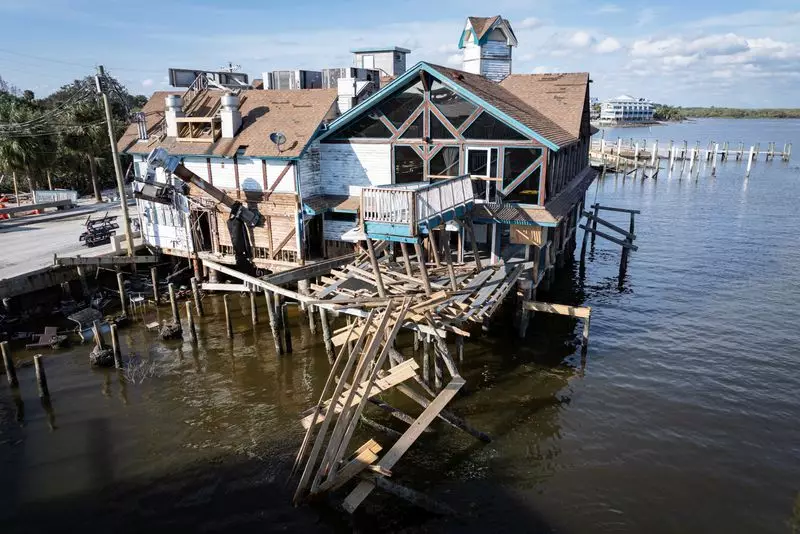In a grim aftermath, the Southeastern United States grapples with the devastating impacts of Hurricane Helene, which has left millions without power and infrastructure severely damaged. The storm, which swept through states from Florida to Virginia, has been linked to at least 60 fatalities. Unfortunately, rescue officials express concern that the final death count could rise as recovery teams continue their search. This hurricane unveiled the vulnerability of this region to nature’s fury and highlighted the necessity for resilient infrastructure and comprehensive disaster preparedness.
Initial damage assessments project losses ranging from $15 billion to potentially over $100 billion, reflecting the breadth of the destruction. This staggering estimate encompasses not only property damage but also the economic ramifications that will emerge as assessment efforts progress. Deanne Criswell, the Federal Emergency Management Agency (FEMA) administrator, emphasized the critical state of water systems, communication infrastructure, and critical transportation routes. The extent of damage demands immediate attention as local authorities and federal agencies mobilize resources to commence a lengthy recovery process.
Hurricane Helene made landfall near Florida’s Gulf Coast, where torrential downpours and relentless winds ravaged homes and communities. Among those affected is Charlene Huggins, whose house a five-generation legacy was reduced to rubble. The emotional toll of losing a home filled with family memories resonates deeply with residents who have spent decades cultivating their lives in these regions. Huggins’ heartbreaking account is not isolated; many families face similar losses that transcend mere physical structures, highlighting the integral role these homes have played in their family histories.
In nearby Horseshoe Beach, the devastation was palpable as storm surges reached monumental heights, overwhelming homes and leaving behind a landscape of wreckage. James Ellenburg, another resident reflecting on his family’s history, stood in disbelief at the destruction surrounding his once-beloved property. These personal stories encapsulate a collective grief reverberating throughout impacted communities. The scars left by Hurricane Helene will take time to heal—both physically and emotionally—and recovery will necessitate the combined efforts of local, state, and federal resources.
As Helene moved inland, it wreaked havoc on North Carolina, particularly in its mountainous regions. Experts reported nearly 30 inches of rain falling in Yancey County, leading to severe flooding that closed over 400 roads statewide. The swampy remnants of what were once picturesque landscapes now present dire challenges for residents and officials alike. The toll includes not only human tragedies—two confirmed deaths as of the latest updates—but also a fallout that endangers public health and safety due to compromised infrastructure.
Views of uprooted trees, damaged homes, and littered roads paint a stark picture of the ongoing struggle. Images of the devastation depict a resilience-tested state, grappling with escalating emergencies. In neighboring Tennessee, fears surrounding the potential failure of the Nolichucky Dam added more layers of complexity to the disaster response. Fortunately, recent updates have indicated stability in the dam, averting an additional crisis.
In light of the sweeping destruction, government officials have pledged to mobilize resources to assist impacted areas. President Joe Biden stated his commitment to ensuring communities receive the necessary support for recovery and rebuilding efforts. This implies rendered aid and strategic planning will be vital in addressing the urgent needs of affected communities as they begin to assess damages and lay the groundwork for rehabilitation.
The message from FEMA emphasizes the importance of comprehensive recovery strategies, especially in states burdened by complexities arising from the extensive damage. Although federal resources are available, the path to recovery will be fraught with challenges as communities endeavor to restore not just their infrastructure, but also their sense of normalcy and connection. The collective grief felt across these states serves as a reminder of the power of nature and the imperative for communities to bolster their resilience amid the relentless forces of climate change.
As the recovery efforts progress, it remains essential that federal, state, and local governments collaborate to ensure effective and timely assistance to those who have lost so much. Hurricane Helene is not merely a story of devastation; it is also a testament to human tenacity, the enduring spirit of community, and the pressing need for ongoing disaster preparedness. The lessons learned from this experience will inform future strategies and responses, shaping a more resilient Southeastern United States.

